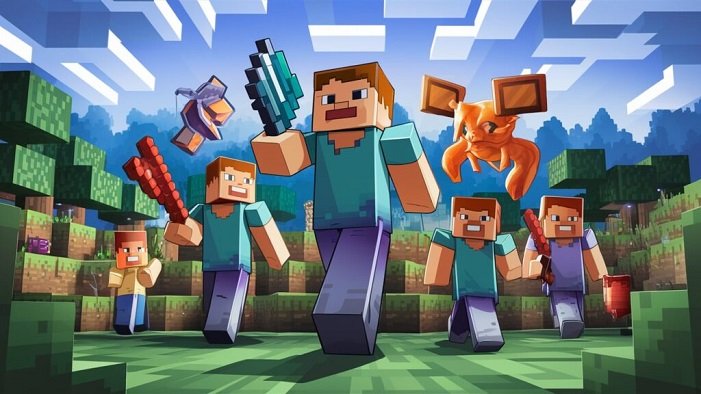Minecraft (2009) Game Icons and Banners: A Complete Guide To Their Ultimate Creation

Minecraft, released in 2009, has grown from a simple sandbox game into a global phenomenon. As someone who has been following its journey, I’ve always found the game’s design elements—like its iconic icons and banners—fascinating. These visual aspects aren’t just about looks; they play a key role in how players interact with and personalize their Minecraft worlds.
What Are Game Icons in Minecraft?

Game icons in Minecraft refer to the small images or symbols you see representing various game elements. They range from tools and weapons to different types of blocks. Over the years, these icons have evolved, and each update brings new designs or tweaks to existing ones.
Early Minecraft Icons
In the early versions of Minecraft (2009), the icons were very basic but effective. Simplicity was key since the game was focused on building blocks and creating a pixelated, retro aesthetic. Items like the pickaxe, sword, and crafting table had very straightforward designs, which made them easy to identify.
Evolution of Icons
As the game grew, the icons became more detailed and diverse. New blocks, tools, and even creatures were added, each represented by unique icons. This not only helped with gameplay but also enhanced the overall visual appeal of the game. Players like myself, who have been around since the early days, appreciate the nostalgia these icons bring, even as new designs continue to roll out.
The Role of Banners in Minecraft
Banners are a form of customization that players can craft and decorate in Minecraft. Introduced in later updates, banners allow players to display their creativity, design unique flags, or even create symbols to mark territories. They can be dyed in multiple colors and adorned with patterns, which makes them highly customizable.
Designing Banners
![]()
When designing banners, players use a combination of dyes and patterns at a crafting table. It’s an exciting way to express individuality in multiplayer servers or single-player worlds. The endless possibilities for banner designs make it one of the most fun and creative parts of Minecraft.
Banners in the Community
In multiplayer servers, banners serve more than just aesthetic purposes. Many players use them to represent teams, guilds, or even nations within the game. I’ve seen players put a lot of effort into creating banners that symbolize their groups or their in-game achievements. The banner feature has brought a sense of community and identity to Minecraft’s expansive world.
The Impact of Icons and Banners on Minecraft’s Visual Appeal
Icons and banners are often underrated in discussions about Minecraft’s design, but they significantly contribute to the game’s visual identity. The blocky, pixelated style of the game is complemented perfectly by the simple yet expressive design of its icons and banners. Whether you’re a veteran player like me or just starting, these elements create a sense of familiarity and belonging.
Why Minecraft’s Design Elements Matter
It’s easy to overlook the importance of game icons and banners, especially in a game as massive as Minecraft. However, they serve as the building blocks (pun intended) of the game’s user interface and personalization options. For players, these visuals help in navigation and make gameplay more immersive. As someone who’s been engaged with Minecraft since its early days, I can confidently say that these small design choices are what make the game timeless.
Conclusion
Minecraft’s game icons and banners have evolved significantly since its release in 2009. While they may seem like small details, their impact on gameplay and player creativity is undeniable. As someone who has been playing for years, I can appreciate how these elements have grown with the game, adding to Minecraft’s charm and endless possibilities.
